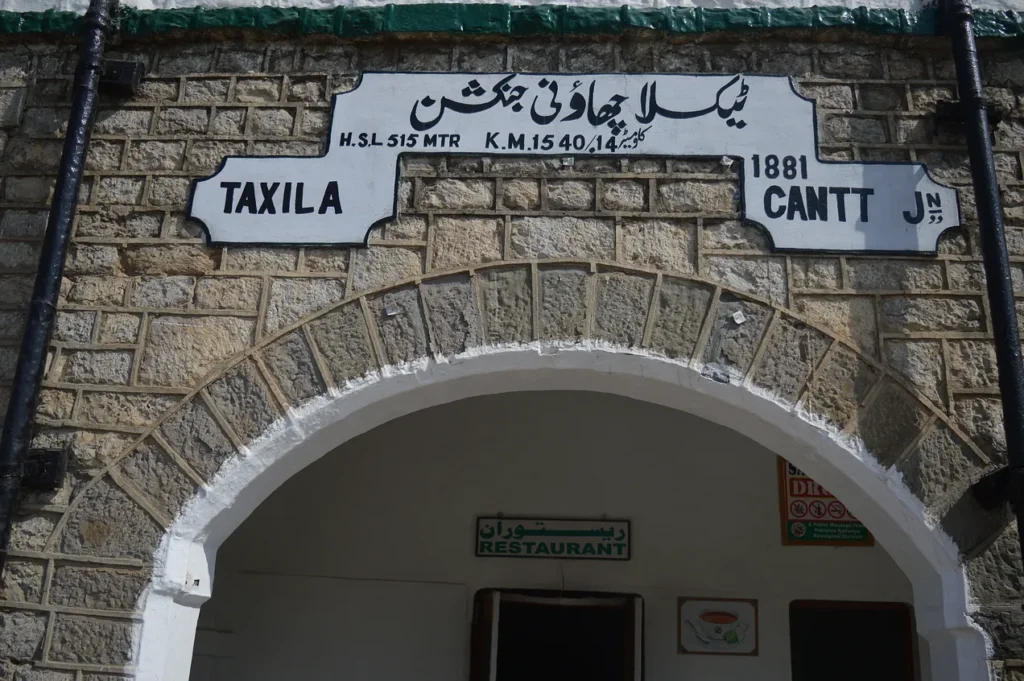
Taxila: Diverse populations have always crossed paths in the East and West. Pakistan is one of the main crossroads in these East-West exchanges.
On the way to Taxila museum, a left turn reveals an old colonial building with a shed and a police picket indicating a Taxila railway station. The picket door has an iron plate engraved with the name ‘Taxila Cantt Junction’ on the top.
During the Persian Achaemenid Empire of Darius I (522-486 BC), both the Gandhara region and the Indian subcontinent forged links with the West. A network of interconnected commercial, trading relationships among various regions had not yet been established.
These interactions have become more efficient and frequent over time. Alexander of Macedonia led expeditions towards the east during this time, which were direct reflections of significant historical events.
A scenic road adjoining the GT road bypass to Taxila offers respite from the scorching heat to Rawalpindi and Islamabad residents. Besides luscious green orchards and a picturesque Khanpur lake, this small road also passes Takshashila, a 1000 BC city that was named in honor of Taksha, Rama’s half-brother and Ayudhiya’s king Bharata.
The British Raj once used this quiet colonial relic to connect the entire subcontinent. There are still scars and wounds from Partition on the old facade of the main building, which is painted in fresh paint. It also remains a reminder of a bygone era.
Also See: PNS Hangor (S-131) victorious over Indian INS Khurki
Even though Taxila Station has been criticized for its deplorable conditions, it was once a key point for exodus during the Partition of 1947. Nevertheless, it is also the site where the massacres of 1947 began and went on to spread, killing millions on both sides.
Taxila and massacres
As soon as the British announced partition, massacres began, friends turned into enemies, neighbors slaughtered neighbors.
India’s partition, which triggered one of human history’s bloodiest upheavals, was 70 years ago this year.
As colonial British administrators dismantled the empire in southern Asia, 14 million people abandoned their homes during the summer and fall of 1947. It is estimated that 200,000 to 2 million people died during those months.
